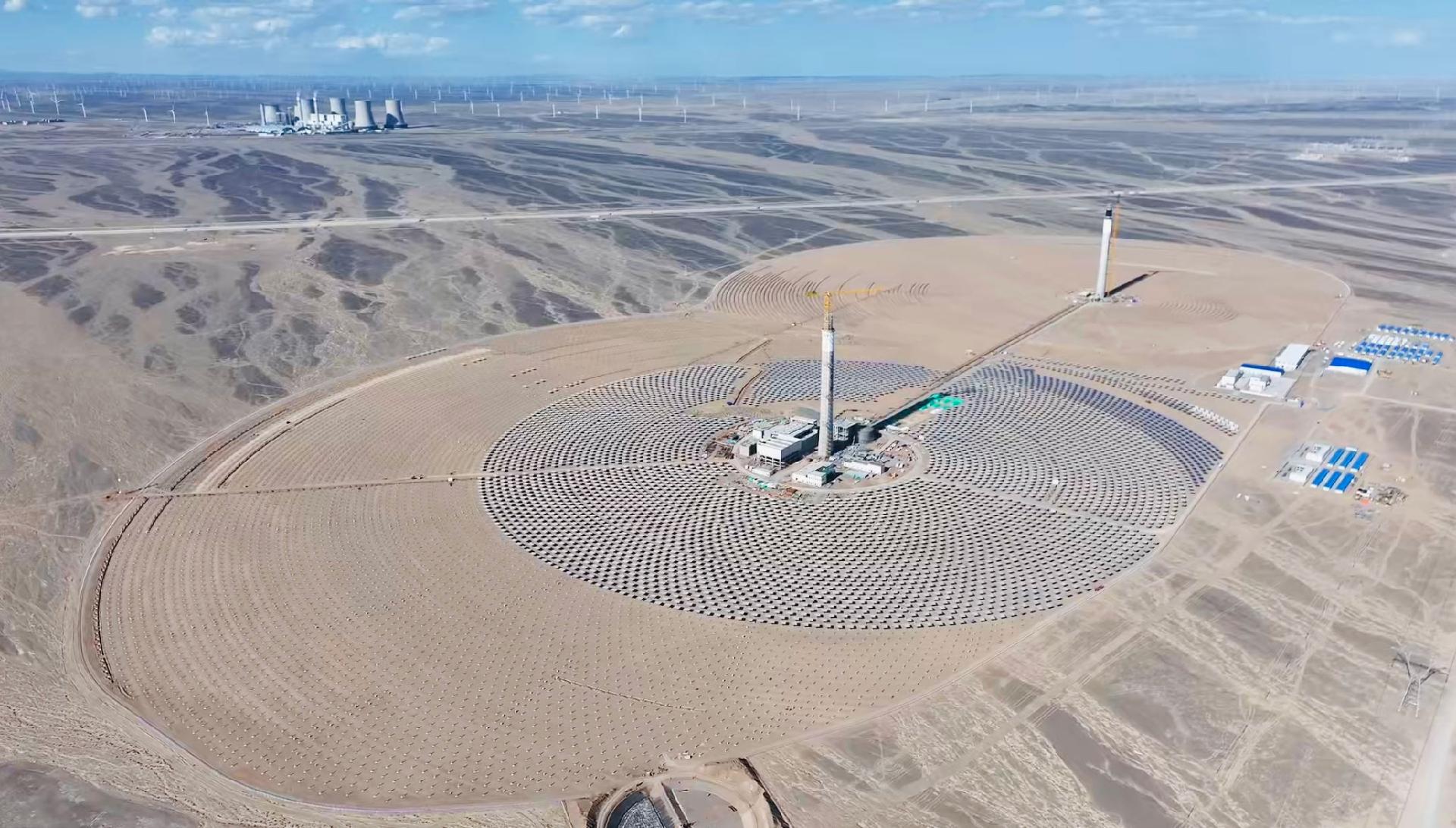China introduces dual-tower solar thermal plant to boost efficiency
China develops a dual-tower solar thermal plant to enhance efficiency.

On Tuesday, China Media Group (CMG) released a video showcasing this impressive project located near Guazhou County in Gansu Province. The site features two 200-meter-tall towers surrounded by nearly 30,000 ground-mounted mirrors. These mirrors form two large, overlapping circles that concentrate sunlight onto each tower.
Similar to a traditional coal plant, the concentrated sunlight heats water to generate electricity. However, unlike other thermal power plants, this innovative design can produce power even at night. The towers store molten salt, which functions as a thermal battery. This salt retains the excess heat collected during the day and releases it to keep the generators running without interruption.
The mirrors utilized in this project are constructed from special materials that boast a remarkable reflection efficiency of 94 percent.
While China's exploration of solar thermal power began in 2016, this new project advances the technology with its dual-tower configuration. "The mirrors in the overlapping area can be utilized by either tower," notes plant project manager Wen Jianghong. "This configuration is expected to enhance efficiency by 24 percent."
The CMG video highlights the mirrors' impressive ability to follow the sun's path. They focus the sun's rays on the eastern tower in the morning and automatically shift to the western tower in the afternoon.
According to the CMG report, the innovative design holds the potential for even greater efficiency gains through the inclusion of multiple towers. The plant is scheduled to be operational by the end of 2024.
This facility is part of a clean energy complex that integrates solar, thermal, and wind power plants. Collectively, they aim to generate over 1.8 billion kilowatt-hours of electricity annually and reduce carbon emissions by 1.53 million tonnes.
Sanya Singh contributed to this report for TROIB News
Discover more Science and Technology news updates in TROIB Sci-Tech












